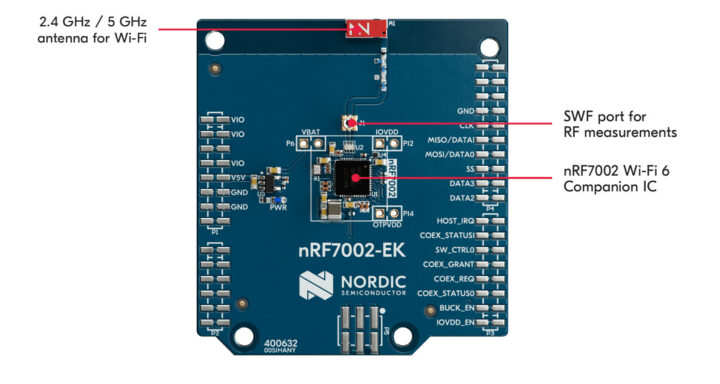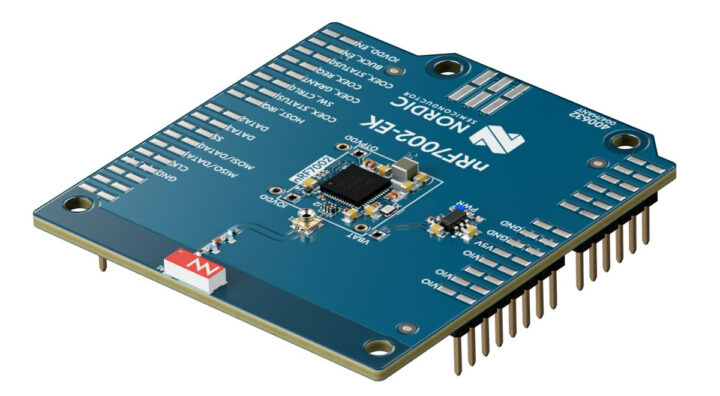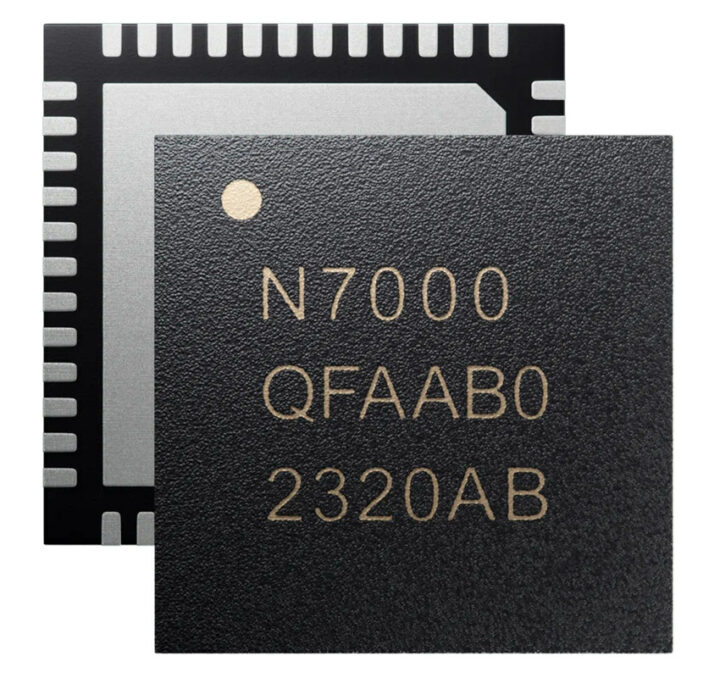Nordic Semi has launched the nRF7002 EK based on the company’s nRF7002 dual-band WiFi 6 IoT chip and in the form of an Arduino shield that works with other Nordic development kits such as the nRF52840 DK, nRF5340 DK, and nRF9160 DK, and separately, the company launched the nRF7000 SSID-based Wi-Fi locationing chip.
nRF7002 EK
Earlier this year, the company launched the nRF7002 DK, a complete development kit with the nRF7002 WiFi 6 chip and the nRF5340 dual-core Arm Cortex-M33 wireless microcontroller, but for developers who already own nRF devkits, they’ve now introduced the nRF7002 EK Arduino Shield.
nRF7002 EK specifications:
- Wireless chip – Nordic Semi nRF7002
- Dual-band Wi-Fi 6 (802.11ax)
- WiFi station mode
- Target Wake Time (TWT)
- 20 MHz channel bandwidth
- Antenna – 2.4 and 5 GHz antenna for WiFi
- SWF port for RF measurement
- Host interface – SPI or QSPI interfaces
- Dimensions – Arduino shield form factor
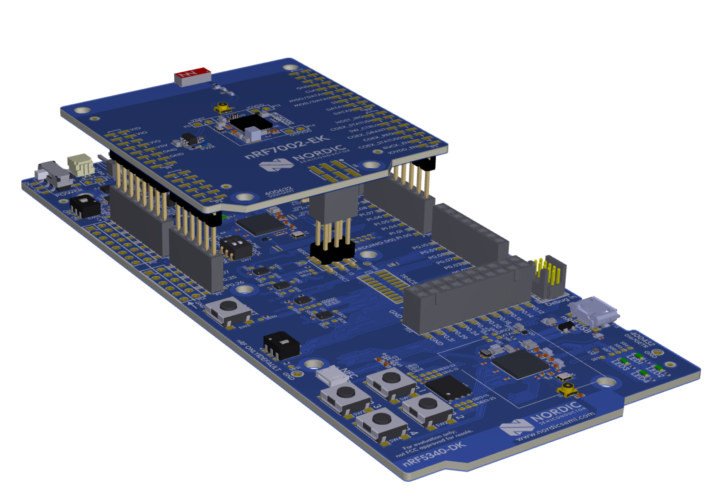
The nRF7002 EK is supported in the nRF Connect SDK along with code samples. While the hardware is basically an Arduino shield, Nordic does not mention compatibility with Arduino boards, and while it might be possible to control the evaluation kit from an Arduino board using the SPI interface (provided you write the code for it), I’m less sure about WiFi/Bluetooth co-existence pins on the shield…
But as noted by Hackster.io, Nordic also just released a Linux driver for nRF70 chips and tested with a Raspberry Pi 4 running Ubuntu 22.04 64-bit connected to the nRF7002 EK through an interposer board. The latter is not for sale but can be manufactured since the hardware design files are available. That also confirms the nRF7002 EK should work with other hardware with an SPI or QSPI interface.
The nRF7002 EK sells for $19 on Crowd Supply (not a crowdfunding campaign), as well as distributors such as Mouser and Digikey. You’ll find more details on the product page.
nRF7000 SSID-based WiFi locationing chip
What comes after nRF7001 and nRF7002? That would be the nRF7000 chip specially designed for SSID-based Wi-Fi locationing and used in combination with an nRF91 SiP for silicon-to-cloud locationing solutions with Wi-Fi, cellular IoT, and GNSS.
nRF7000 highlights:
- Companion IC with integrated RF for passive and active Wi-Fi scanning
- Compatible with IEEE 802.11 ax and earlier standards (IEEE 802.11 a/b/g/n/ac)
- Dual-band 2.4 GHz and 5 GHz operation
- Output power – Up to +21 dBm
- Single-ended 50 antenna port
- Host interface – SPI or QSPI host interface, 3-wire or 4-wire coexistence interface
- Supply voltage range 2.9 – 4.5 V
- Power consumption @ 3.3V
- 252 mA @ max output power, 2.4 GHz, 1DSSS
- 260 mA @ max output power, 5 GHz, 6Mbps
- 60 mA Rx 2.4 GHz, 56 mA RX 5 GHz
- Package – QFN48 6x6mm
- Temperature Range – -40° C to 85° C
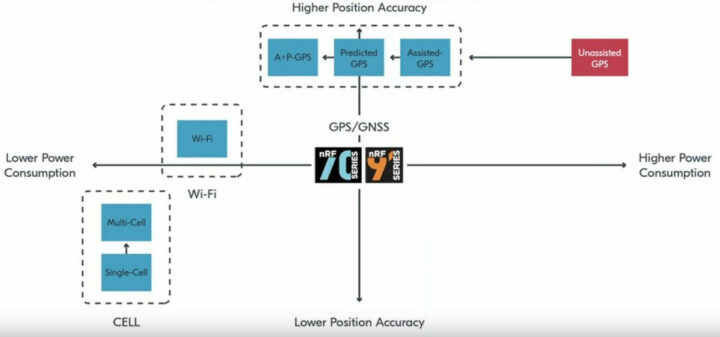
The nRF7000 is not used to transmit or receive any user data, and instead only scans SSID with RSSI and other data to estimate the position of objects for indoor positioning. It would typically be used in asset trackers with GNSS for higher accuracy for outdoor positioning only but with higher powr consumption and the much more efficient cellular IoT positioning, but with the lowest accuracy. WiFi-based positioning offers a power consumption/accuracy tradeoff, and contrary to GNSS, also works indoors. I’d assume the more WiFi routers/access points there are, the better.
That means we now have three nRF70 chips as shown in the table below.
There’s no development or evaluation kit specific to the nRF7000, but developers can use the nRF7002 EK discussed above to emulate either nRF7001 or nRF7000 in combination with the nRF9160 DK. More technical details may be found on the documentation website, and further information might also be available in the press release.

Jean-Luc started CNX Software in 2010 as a part-time endeavor, before quitting his job as a software engineering manager, and starting to write daily news, and reviews full time later in 2011.
Support CNX Software! Donate via cryptocurrencies, become a Patron on Patreon, or purchase goods on Amazon or Aliexpress


